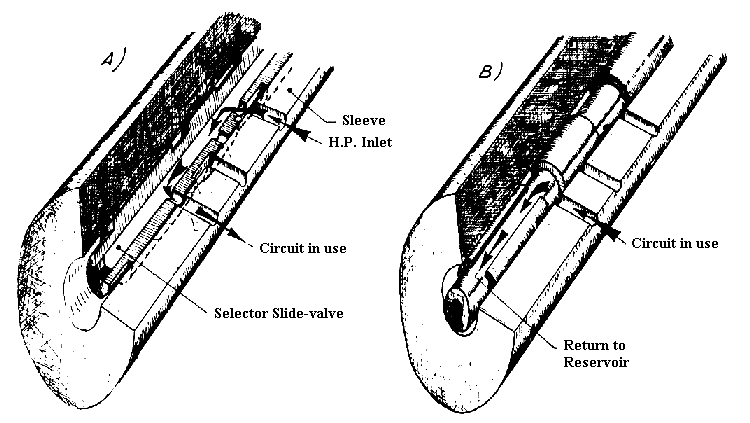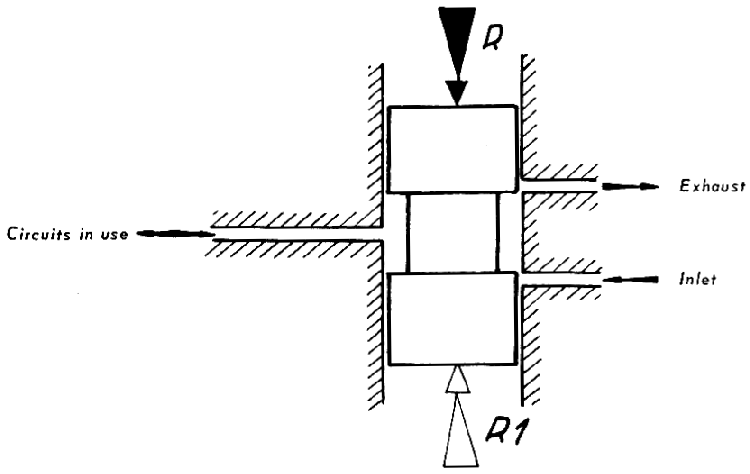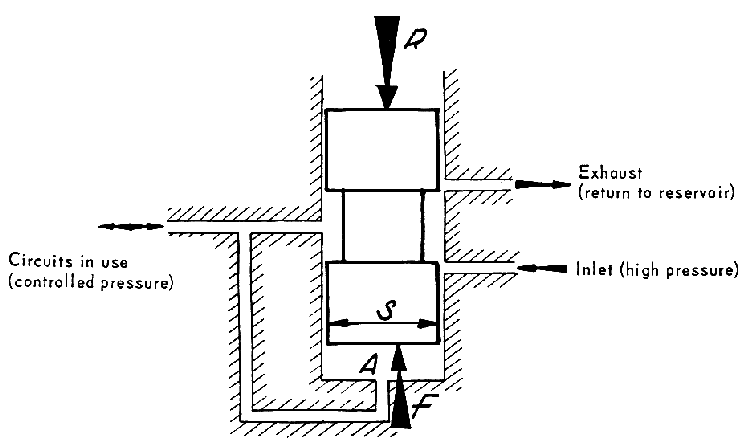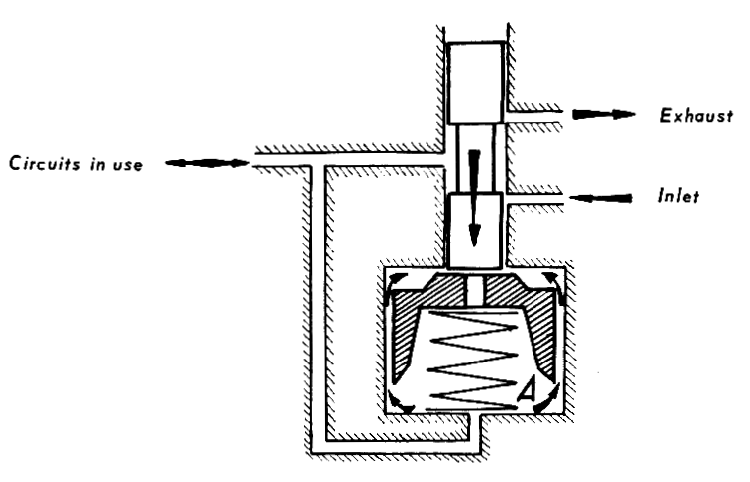|
The gear-selector
slide-valve is hollow, and has 1 inlet for the supply of the fluid at High
Pressure and 5 outlets (1 for each gear) to supply the gears.
Longitudinal and
circumferential grooves machined in the slide-valve allow the fluid to
return to the reservoir from the various circuits. The sleeve has 5 ports,
one to supply each gear.
- With the valve at rest
(Neutral), the various outlets from the slide-valve align with a plain part
of the sleeve. The various ports of the sleeve communicate with the
reservoir via the grooves in the slide-valve.
- Pressurisation (Diagram
A) : When the slide-valve is moved, a port is aligned in the latter with a
corresponding port in the sleeve and the circuit is pressurised.
- De-Pressurisation
(Diagram B) : With the slide-valve in any position which allows alignment of
an outlet to a circuit to communicate with the return to the reservoir, the
fluid under pressure in that circuit will flow out and return to the
reservoir.
NOTE : The operation of this
distributor is independant of the amount of effort applied 10 the
slide-valve when it is being moved. Only the movements and positioning of
the latter permit the distribution of fluid.
A further type of pressure
distributor : The height correctors, the operation of which we saw in
chapter 4.
|





